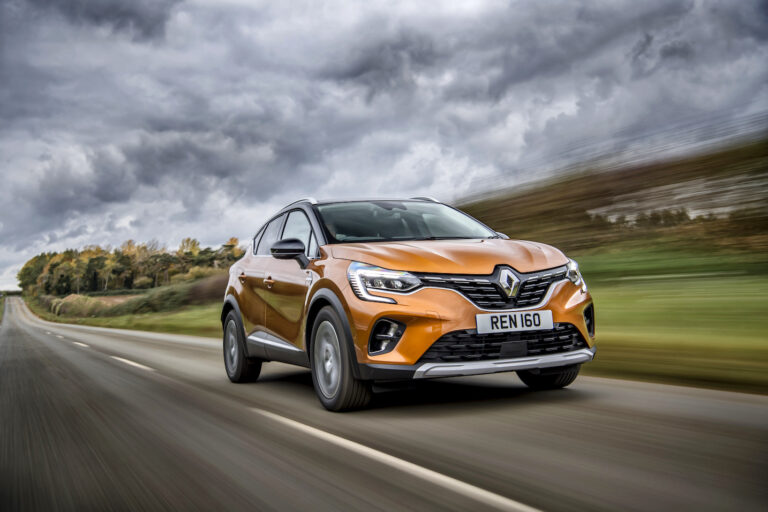The second generation of Renault Captur has really seen the French firm develop its small family car into something morphing between an MPV and crossover. So far, there’s no doubting the Captur’s popularity with more than 150,000 sold making it Renault’s best selling model. For the first time, the Captur also gets hybrid and, as seen here, plug-in hybrid options too, to extend that appeal still further.
Renault Captur PHEV – Design
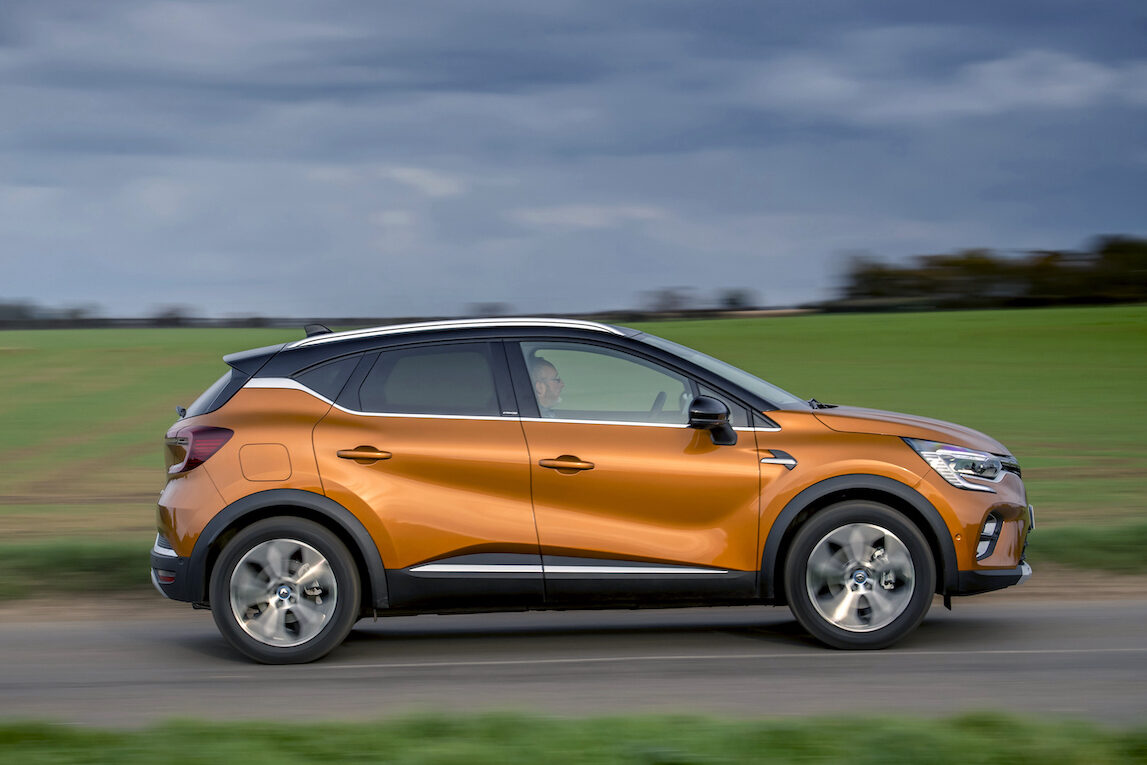
As it has already done with the larger Scenic, Renault has logically pushed the boundaries of a small MPV with this latest Captur. With more crossover-like styling cues than before, Renault is pushing into that growing market while also retaining the more popular practical elements that give it that family appeal.
We think it works too. The short and squat purposeful looks belie its more practical nature, especially in some of the bolder colours such as the Desert Orange with the black roof. The 17inch alloy wheels with their lovely five-hexagon design are pretty sizeable for this size of car, while we like the kick up of the side line into the C pillar and the high waisted rear end. However, that high waist is a slight hint of what’s to come inside.
Renault Captur PHEV – Power and range
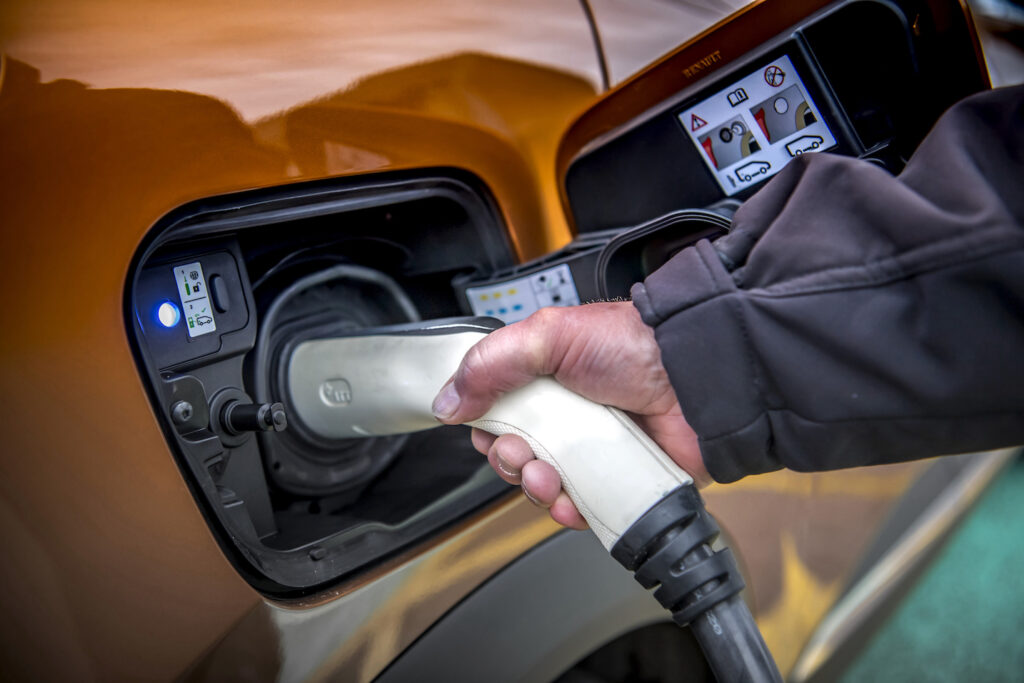
This plug-in hybrid version of the Captur gets a 1.6-litre petrol engine allied to a 9.8kWh battery to give it a maximum of 160bhp. The 0 to 60mph time is 10.1 seconds with a 107mph top speed, emissions are 34g/km and there’s an electric only range of 31 miles. As ever with a plug-in hybrid, the claimed average fuel economy is 188.3mpg although matching that in the real world is essentially impossible. During our time with the car, we managed an average of 71.6mpg.
The electric-only range is also highly sensitive to both the ambient temperature and your immediate previous driving conditions. On a chilly day after lots of motorway driving, we saw a fully-charged electric range of just 22 miles, but just two days later, when the weather was warmer and we’d been doing more urban driving that same range on a full charge showed 34 miles.
Using a 7kW wallbox, a full charge from zero will take three hours, while both Type 2 and domestic three-pin plug cables are provided as standard. The good news is that these can be kept in an underfloor storage area in the boot out of the way, the bad news is that that encroaches into the general boot space – more on which in a moment. The charging point is behind a flap on the driver’s offside rear wing – a mirror of the petrol filler flap which is on the nearside. Once plugged in, the cable doesn’t just lock in to the car with the central locking but also needs a press of a smaller button, also behind the flap, to release the cable from the car.
Renault Captur PHEV -On the road
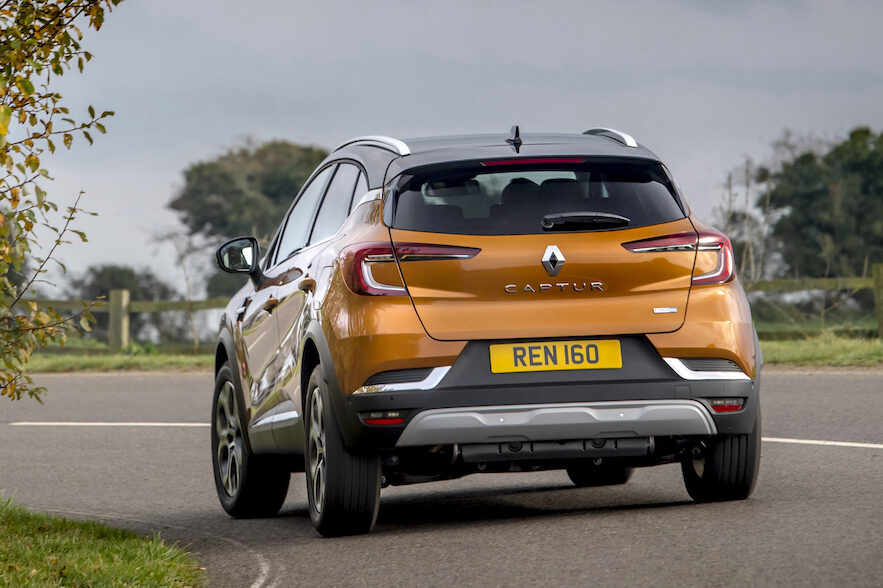
Ok, first the good news. The Captur generally is pretty refined, exceptionally quiet even when the petrol engine is on, with smooth power delivery and little body roll through corners. The undoubted weak point of this baby Renault though is with its ride quality.
As stated earlier, it sits on pretty large 17-inch alloy wheels (18s are even available as an option) and the ride, especially at low speeds, is much firmer than you expect for what is not, let’s face it, an otherwise sporty car. It crashes into potholes with a ferocity that a family car should be cushioning from the cabin not sending that noise and movement back into the passenger cabin.
You do get used to it – and extensive past experience of a Renault Scenic has previously shown us that – but it never becomes comfortable. When Renault’s rivals Citroen are going the other way with the development of their cars focussing on greater comfort, it’s an unusual path to continue to follow. The good news is that that ride quality does improve slightly on faster roads.
Renault Captur PHEV -Interior
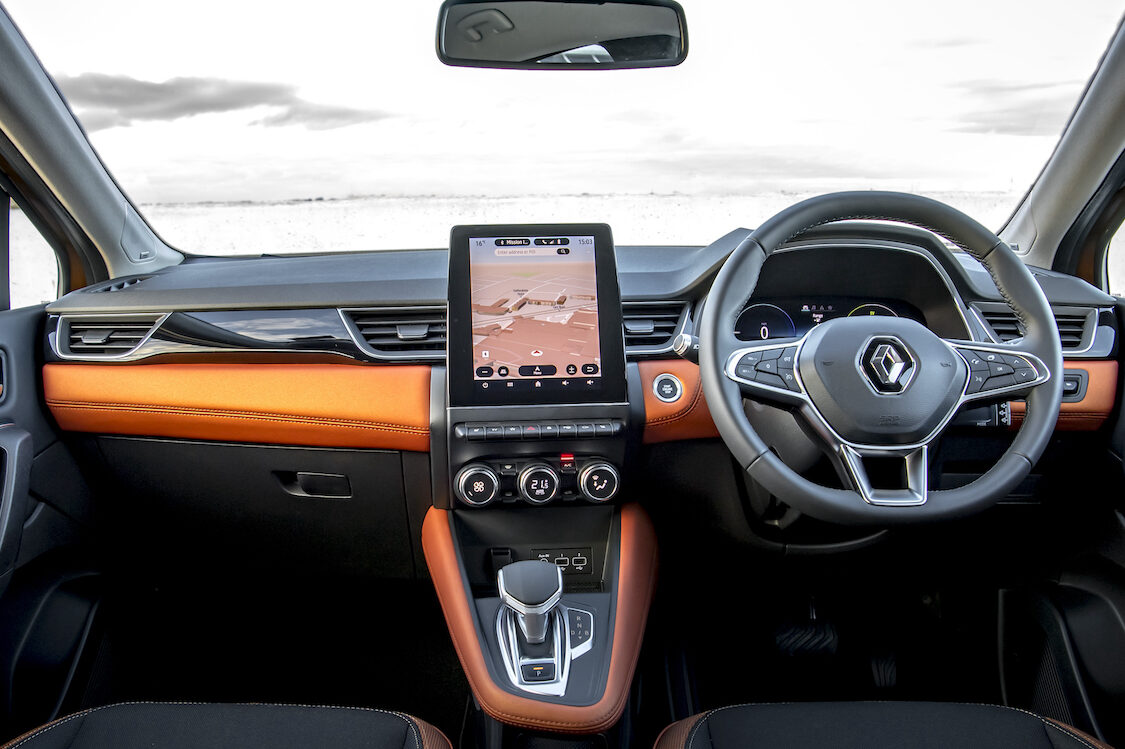
If the exterior of the Captur has taken a noticeable step forward from the first generation model, then the interior is a veritable leap. For fit and finish and the materials used, much of it feels in a different class.
Depending on the outside hue of your car through, it’s not necessarily for the shy and retiring types. The Desert Orange of our test car was carried over inside with a padded neoprene-style material around the dash and the transmission tunnel which takes some getting used to. We quite liked it, but it won’t be everyone’s tastes. It does help to brighten the interior though which, given that there’s no panoramic roof, could otherwise be quite dark.
The main section of the dashboard is dominated by the large upright portrait-format touchscreen in the centre where the infotainment system is reasonably intuitive. Preferable to a sideways landscape format when looking at a map screen (it’s obviously more important to see what’s ahead on a map rather than what’s to the side of you), this type of over-size screen might be common in more premium models, but certainly not at this price point.
Within the system itself, as well as the usual functions you can also find plenty of trip computer information on the efficiency of your driving with your electrical power consumption and also the total amount of energy recuperated over certain journeys and your trip history.
Just below the screen are two USB sockets, plus aux and 12v sockets along with two rubber-lined trays, one below the other. Between the seats are two cupholders and there’s a small cubby under the armrest. There’s also an Isofix child seat mounting point in the front passenger seat to go with the two in the back. It’s all nicely practical for everyday use and welcome in what is essentially a car likely to be bought and driven by families. It also helps to make up for the tiny glovebox.
Up front there’s plenty of head and legroom with height adjustment on the driver’s seat and a height and reach adjustable steering wheel. For what is also not an especially large car on the outside, there’s also a surprising amount of room in the back seats too with enough head and legroom for adults up to 6-feet tall. Back seat passengers also get a 12v power socket and two USB points. The rear seat can also slide back and forth as a bench for more boot space if needed.
That’s just as well as the boot itself is fairly well depleted by the plug-in hybrid’s batteries. Compared to the standard Captur’s 455 litre boot, this plug-in makes do with just 265 litres, which admittedly can be expanded with that sliding rear seat if you’re devoid of passengers.
What underfloor space there is, is taken by those charging leads and while there’s two handy bag hooks on the sides, it feels a bit limited for what is meant to be a family car. Certainly going away for a week’s holiday with a family would be a challenge – perhaps requiring use of the standard roof rails for the use of a roof box.
Renault Captur PHEV – Summary
We were big fans of the previous Renault Captur and this second generation version only takes that to new heights. The reason for much of that is down to the interior which is vastly improved and also houses lots of nice practical elements that are lovely to have in a family car.
Allying that to plug-in hybrid technology is generally pretty good news too with that 31-mile electric only range, but the payoff is that severely reduced boot space which is hard to forgive. Ok, this isn’t a large car in the first place, so battery packaging will always be an issue, but the boot, together with that firm ride are all that stop it from being close to perfect.
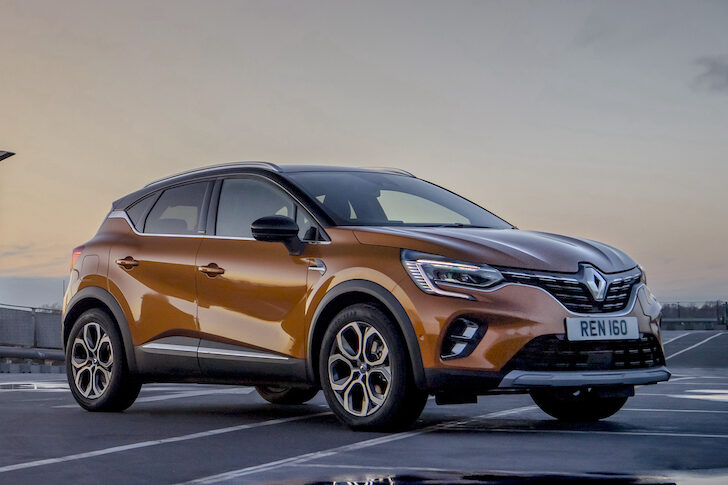
Fact box
Model: Renault Captur E-Tech Plug-In Hybrid
Price: from £30,995
Power: Petrol – 1.6-litre; Battery – 9.8kWh
Electric range: 31 miles
Average fuel consumption: 188.3mpg
CO2 emissions: 34g/km
Rating: 9/10

